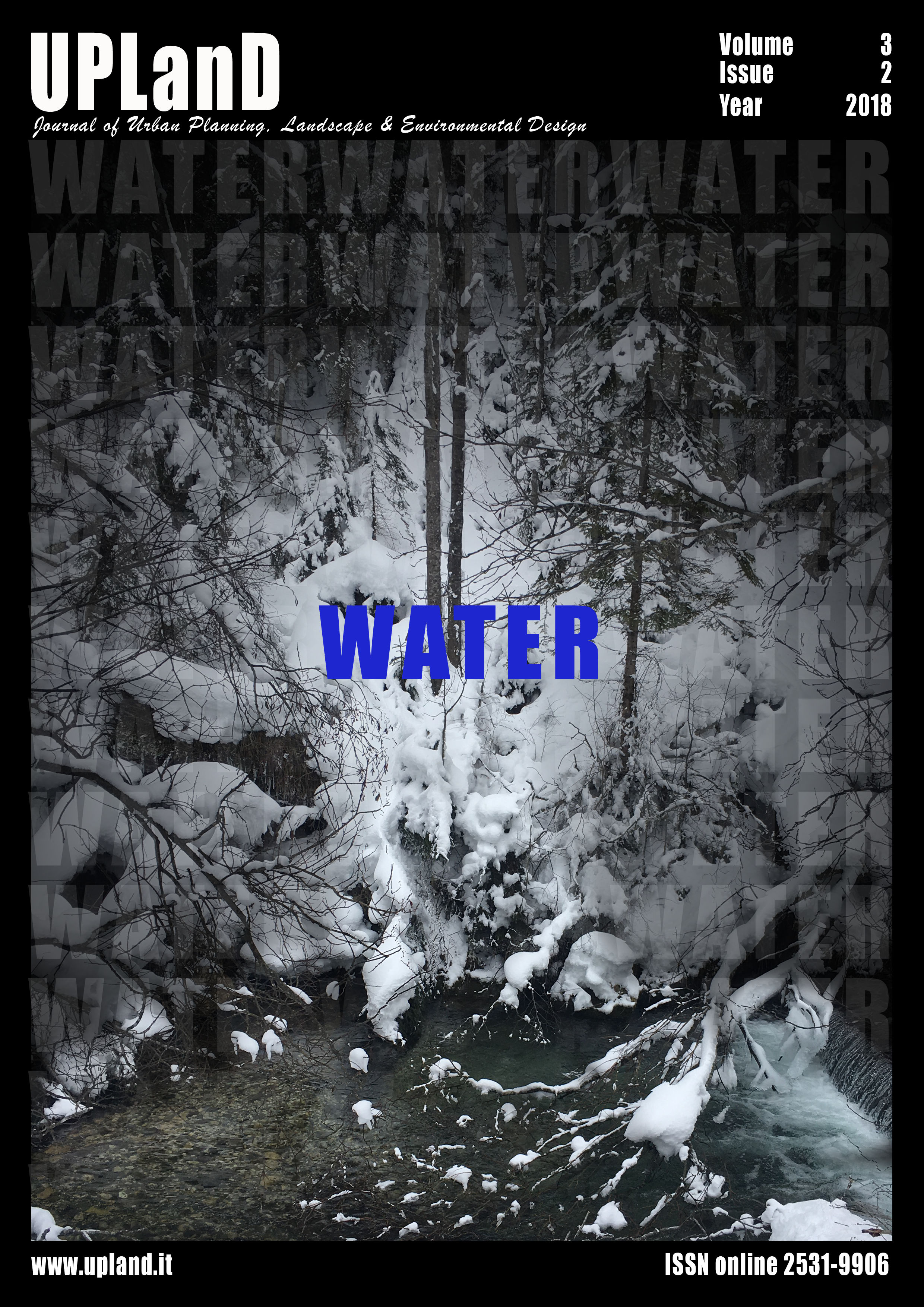Hydraulic risk in urban area. Community and memories in historical centre of Acireale
Main Article Content
Abstract
The mainstream approach to environmental risk analysis uses probabilistic tools and mathematical models to evaluate the possibility that a given event will occur and its magnitude. This approach does not take into account the complexity of the socio-economic system omitting the uncertainties that result from the deep relationship between human, society and the environment. Risk assessment requires other contributions able to express and use the complexity not as a limit but as an opportunity. These contributions should be able to integrate traditional and qualitative approaches. Informal dialogues and life stories are useful to know community perceptions and territorial subjectivity in order to create a more complex image of the territory and to increase the awareness of the risk. This paper aims to illustrate the ongoing experience in Acireale, where a participatory process on the assessment and prevention of flood risks in urban areas has been started. The first part of the process was intended to rebuild the collective image of risk. Afterwards a collective experience of service learning has tried to transform these analysis into project. Questions are still many: could this process be a codified form? What are difficulties and opportunities of such a process? How does this influence the redesign of the city and community behaviors?
Downloads
Article Details

This work is licensed under a Creative Commons Attribution-NonCommercial-NoDerivatives 4.0 International License.
Authors who publish with this journal agree to the following terms:- Authors retain copyright and grant the journal right of first publication with the work simultaneously licensed under a Creative Commons Attribution License that allows others to share the work with an acknowledgement of the work's authorship and initial publication in this journal.
- Authors are able to enter into separate, additional contractual arrangements for the non-exclusive distribution of the journal's published version of the work (e.g., post it to an institutional repository or publish it in a book), with an acknowledgement of its initial publication in this journal.
- Authors are permitted and encouraged to post their work online (e.g., in institutional repositories or on their website) prior to and during the submission process, as it can lead to productive exchanges, as well as earlier and greater citation of published work (See The Effect of Open Access).
References
Balducci, A. (2000). Le nuove politiche urbane e la necessaria riscoperta di approcci partecipativi. Meetings Archivio Osvaldo Piacentini, Cavriago, March 25, 2000.
Barthel, S., Folke, C., & Colding, J. (2010). Social–ecological memory in urban gardens—Retaining the capacity for management of ecosystem services. Global Environmental Change, 20(2), 255-265. doi:10.1016/j.gloenvcha.2010.01.001
Bobbio, L. (2004). A più voci. Amministrazioni pubbliche, imprese, associazioni e cittadini nei processi decisionali inclusivi. Napoli, IT: Edizioni Scientifiche Italiane.
Bocchi, G., & Ceruti, M. (Eds.). (2007). La sfida della complessità (Vol. 65). Milano, IT: Pearson Italia Spa.
Busacca P., Gravagno F. (2006), A mille mani. Atti del convegno internazionale «La casa delle città» come luogo d’incontro fra attori urbani. Un confronto tra esperienze e prospettive. Catania, IT: Ed.It.
Caloiero, D., Gabriele, S., Govi, M., & Petrucci, O. (1995), Il nubifragio del 13 marzo 1995 in Calabria meridionale e in Sicilia orientale. Quaderni di studi e documentazione CNR GEAM, 19, 3-11.
Decandia, L. (2000). Dell’identità. Saggio sui luoghi. Per una critica della razionalità urbanistica Vol. 1. Catanzaro, IT: Rubbettino.
Funtowicz, S. O., & Ravetz, J. R. (1993). Science for the post-normal age. Futures, 25(7), 739-755.
Gravagno, F., & Saija, L. (2007). “A Fera o’ Luni” di Catania. Racconto di un’esperienza di ricerca-azione. Archivio di studi urbani e regionali, 90, 171-182.
Gravagno C. M., & Scaccianoce, A. (2004). Imago urbis. Acireale tra architettura e scenografia. Acireale, IT: Galatea Editrice.
Gambino, R. (1997). Conservare, innovare: paesaggio, ambiente, territorio. Torino, IT: Utet.
Hoffman, S. M., & Smith, O. (2002). Catastrophe and culture the anthropology of disaster. School of american research advanced seminar series (No. 303.485 C3).
Lave, J., & Wenger, E. (2006). L’apprendimento situato. Dall’osservazione alla partecipazione attiva nei contesti sociali. Trento, IT: Edizioni Erickson.
Larsen, K. (1999). Learning cities: the new recipe in regional development. Organisation for Economic Cooperation and Development. The OECD Observer, 217/218, 73-76.
Lewis, D., & Mioch, J. (2005). Urban Vulnerability and Good Governance. Journal of contingencies and crisis management, 13(2), 50-53. doi:abs/10.1111/j.1468-5973.2005.00456.x
McIntyre, A. (2008). Participatory Action Research. New York, USA: SAGE Publications.
Micarelli, R. & Pizziolo, G. (2003). L’arte delle relazioni. Firenze, IT: Alinea editrice.
Morin, E. (1993). Introduzione al pensiero complesso. Gli strumenti per affrontare la sfida della complessità. Milano, IT: Sperling and Kupfer.
Osborne, M., Kearns, P., Yang J. (2013). Learning cities: Developing inclusive, prosperous and sustainable urban communities. International Review of Education, 59, 409-423. doi:org/10.1007/s11159-013-9384-y
Reardon, K. M. (2006), Promoting reciprocity within community/university development partnerships: Lessons from the field. Planning, Practice and Research, 21(1), 95-107. doi10.1080/02697450600901566
Saija, L. (2017). La ricerca-azione in pianificazione territoriale e urbanistica. Milano, IT: Franco Angeli.
Trigila, A., Iadanza, C., Bussettini, M., Lastoria, B., Barbano, A. (2015). Dissesto idrogeologico in Italia: pericolosità e indicatori di rischio. Rapporto 2015, ISPRA.
Whyte, W. F. (1989). Advancing scientific knowledge through participatory action research. In Sociological forum vol.4,(pp.367-385). Rotterdam, NL: Springer.

